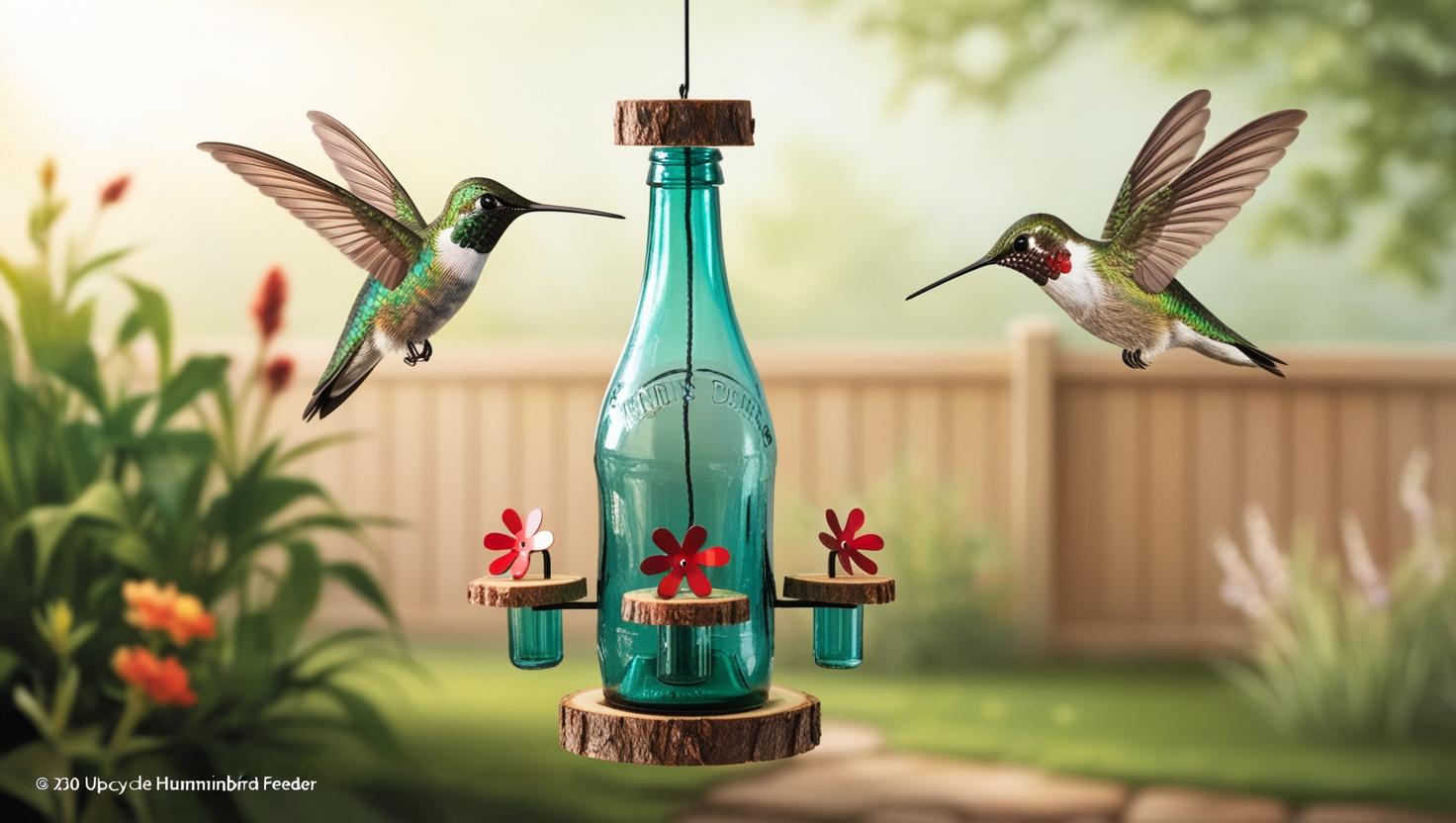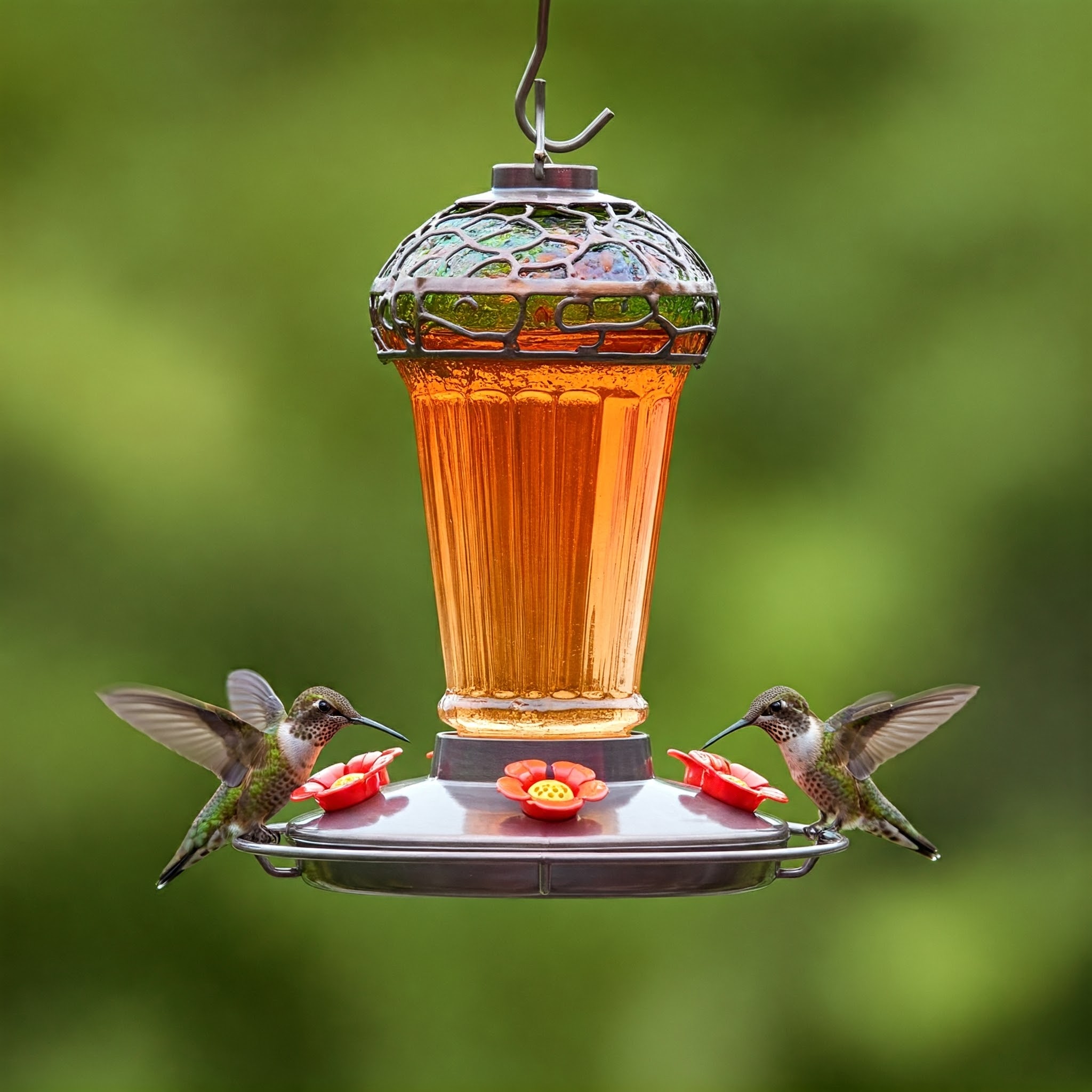For many, hummingbirds are among nature’s most captivating creatures. Their iridescent feathers, delicate hovering, and vibrant personalities bring energy and enchantment to any outdoor space. As more people embrace birdwatching as a means of relaxation, education, and environmental stewardship, attention has turned toward creating safe, sustainable, and visually appealing feeding environments. This is where upcycled hummingbird feeders come into play.
An upcycled hummingbird feeder is a feeding station crafted from repurposed materials—such as old glass bottles, reclaimed wood, or vintage kitchenware—giving these items a second life as functional garden art. By investing in eco-friendly hummingbird feeders, you enjoy all the benefits of traditional designs while minimizing environmental impact and adding a distinctive, decorative touch to your outdoor haven.
Understanding Upcycled Hummingbird Feeders
Upcycled hummingbird feeders take the concept of reuse and transform it into something beautiful, functional, and beneficial for wildlife. Instead of purchasing a mass-produced plastic feeder, consider using items destined for landfill and turning them into eye-catching feeders. Old glass bottles, mason jars, and gently used teacups become nectar reservoirs; vintage spoons or salvaged metals can be shaped into feeding ports and perches. This approach reduces waste, keeps unique materials out of landfills, and preserves the environment—values that resonate strongly with today’s eco-conscious gardeners.
Beyond sustainability, upcycled feeders offer exceptional aesthetic value. Each piece is inherently unique, reflecting the history and character of the materials chosen. This personal touch can transform a standard garden arrangement into a gallery of functional artwork.
Decorative Hummingbird Feeder: Merging Style and Function
A decorative hummingbird feeder is more than a mere vessel for nectar. It’s a statement piece that can elevate the visual appeal of your garden. While many decorative feeders are mass-produced, upcycled designs allow for greater creativity, showcasing interesting textures, colors, and shapes. Imagine a feeder crafted from a bright, hand painted bottle or a charmingly weathered wooden spool, adorned with subtle floral patterns.
In this context, even a hand painted hummingbird feeder can be considered upcycled and decorative. An artisan may rescue an old vase or jar, carefully clean and seal it, then paint hummingbird-attracting motifs—flowers, leaves, and bold colors—on the surface. The result is a feeder that doubles as a piece of garden art. This combination of artistry and functionality makes the feeder not only a nectar source but a focal point that sparks conversation.
Eco-Friendly Hummingbird Feeders: Going Green for Greater Good
When you opt for eco-friendly hummingbird feeders, you support responsible resource management and protect hummingbirds themselves. Eco-friendly feeders often feature:
- Sustainable Materials:
Using reclaimed wood, recycled glass, or other repurposed materials reduces the carbon footprint associated with producing new materials. - Non-Toxic Finishes and Paints:
High-quality, non-toxic paints, varnishes, and sealants ensure the nectar remains pure and safe for hummingbirds. This is especially important because hummingbirds are sensitive to contamination. - Durable Construction:
Eco-friendly feeders, especially those made from sturdier reclaimed materials, tend to last longer, minimizing the need for frequent replacements and further waste. - Support for Local Artisans and Communities:
Many upcycled hummingbird feeders are crafted by local artists who carefully select materials and design elements. Supporting these artisans fosters local economies and encourages sustainable crafts.
By choosing eco-friendly feeders, you contribute to the well-being of both your local environment and the hummingbirds that grace your garden.
Benefits of Investing in Upcycled and Decorative Hummingbird Feeders
1. Unique Aesthetic and Personalization:
Your garden should reflect your personality and tastes. Upcycled feeders let you choose designs that resonate with your style—rustic farmhouse, vintage chic, or modern minimalism. Each feeder tells a story, creating a visually stimulating environment that extends beyond common garden décor.
2. Environmental Stewardship:
By turning would-be waste into a hummingbird feeder, you actively reduce your environmental impact. Less energy is expended on creating new materials, and fewer items end up in landfills. Your choice of an upcycled, eco-friendly hummingbird feeder aligns with your values as a responsible caretaker of nature.
3. Enhanced Birdwatching Experiences:
Hummingbirds are attracted to vibrant, accessible feeding stations. A well-designed decorative feeder provides perches, easy feeding ports, and often uses bright colors or flower patterns to lure them in. More hummingbirds mean more opportunities to witness their fascinating behavior—courtship displays, territorial chases, and that mesmerizing wingbeat.
4. Educational Opportunities:
Introducing children or guests to your garden’s hummingbirds can spark conversations about sustainability, wildlife habitats, and the importance of reducing waste. The feeder itself becomes a teaching tool, illustrating the concept of upcycling and environmental care in a tangible, beautiful way.
Considerations When Choosing an Upcycled Hummingbird Feeder
- Material Safety:
Ensure the chosen materials are free from harmful chemicals, rust, or residues that could leach into the nectar. If you are unsure, consult with a knowledgeable artisan or supplier who specializes in eco-friendly hummingbird feeders. - Functional Design:
Upcycled feeders should remain practical. Ensure that the design allows easy access for hummingbirds, with feeding ports sized appropriately for their bills and shallow wells to prevent nectar drips. Make sure the feeder can be easily cleaned and refilled. - Proper Sealants and Finishes:
Use bird-safe, non-toxic sealants that prevent water damage, mold growth, and contamination. UV-resistant finishes help maintain vibrant colors over time. - Placement and Maintenance:
Upcycled feeders, like traditional versions, must be strategically placed to ensure hummingbird safety and comfort. Hang them in a slightly sheltered area to prevent nectar spoilage due to direct sun, and maintain a consistent cleaning routine to keep nectar fresh.
Maintenance Tips for Eco-Friendly Hummingbird Feeders
- Regular Cleaning:
Clean your feeder with warm water and a non-toxic, mild soap at least twice a week in warm weather. Rinse thoroughly to remove all soap residue. - Frequent Nectar Changes:
Replace nectar every 2-4 days, depending on temperature. Fresh nectar keeps hummingbirds healthy and encourages them to return often. - Inspect for Damage:
Since you are using upcycled materials, check for any cracks, leaks, or structural weaknesses, addressing them promptly to ensure a safe feeding environment. - Adjust for Seasonality:
During migration periods, hummingbirds may need more consistent nectar supplies. In colder months, if hummingbirds remain in your area, consider ways to keep nectar from freezing, such as using insulation or a specially designed heated feeder.
Conclusion
Opting for upcycled hummingbird feeders brings together creativity, sustainability, and a profound appreciation for these delicate birds. By combining decorative elements, repurposed materials, and eco-friendly principles, you transform your garden into a distinctive, bird-friendly haven. Each hummingbird that hovers at your feeder is a testament to your commitment to the environment, artistry, and the simple joy of connecting with nature. These feeders do more than sustain hummingbirds; they enrich your outdoor experience, forging a deeper relationship with wildlife and the world around you.
10 Unanswered FAQ Questions (With Detailed Answers)
1. What types of materials are best for creating upcycled hummingbird feeders?
Materials like recycled glass bottles, mason jars, vintage ceramics, and reclaimed wood are excellent choices. They’re durable, easy to clean, and often readily available. Ensure any material selected can be thoroughly sanitized, does not corrode in contact with sugar water, and can safely hold nectar without leaching chemicals.
2. How can I ensure my decorative hummingbird feeder is safe for the birds?
Safety depends on using non-toxic paints, varnishes, and sealants. Always avoid lead-based paints or finishes that may seep into the nectar. Ensure feeding ports are small enough to discourage bees and wasps but appropriately sized for hummingbird bills. Regularly clean the feeder to prevent mold or bacterial growth.
3. Can I upcycle an old feeder into something more eco-friendly?
Absolutely. You can refurbish an older feeder by replacing plastic parts with sustainable materials, using non-toxic finishes, or modifying the design for easier cleaning. Upgrading it with a more vibrant, hand painted finish can also make it more visually appealing without purchasing a new feeder.
4. Do hummingbirds show preferences for particular styles of decorative feeders?
While hummingbirds are largely attracted to bright colors and a steady food source rather than style, certain colors like red and orange are known to catch their eye. The feeder’s placement, nectar freshness, and absence of predators or distractions have a more significant impact than style alone.
5. Are eco-friendly hummingbird feeders more expensive than traditional ones?
Prices vary, but many upcycled feeders are handcrafted and may cost slightly more due to artisanal labor and sustainably sourced materials. However, their durability, uniqueness, and environmental benefits often justify the cost for those valuing quality and sustainability.
6. Can I paint my upcycled hummingbird feeder myself?
Yes. When painting, use safe, non-toxic, outdoor-rated paints. Thoroughly clean and prime the surface, then apply paint in thin layers. Finish with a bird-safe, UV-resistant clear sealant. Allow ample drying and curing time before use.
7. How do eco-friendly hummingbird feeders influence my overall birdwatching experience?
By choosing eco-friendly options, you create a healthier habitat and often attract a broader range of wildlife. This results in more frequent sightings, better feeding behaviors, and a deeper understanding of hummingbirds’ daily life cycles, enriching your overall birdwatching experience.
8. Do hummingbirds return to the same feeder every year?
Hummingbirds have strong site fidelity. If they find a reliable, safe nectar source, they often return each season. Maintaining fresh nectar, a clean feeder, and a healthy environment encourages them to make your garden a regular stop.
9. How can I complement my upcycled feeder with other hummingbird-friendly features?
Enhance the habitat with native flowering plants, water features like fountains or misters, and sheltered areas for resting and nesting. Limiting pesticide use ensures a healthy insect population, providing hummingbirds with a natural protein source.
10. How often should I inspect and repair my upcycled hummingbird feeder?
Examine your feeder each time you clean or refill it. Check for signs of wear, leaks, mold, or damage. Addressing issues promptly ensures the feeder remains safe, functional, and attractive, extending its lifespan and the health of your visiting hummingbirds.
By investing in upcycled hummingbird feeders, you create a vibrant, environmentally conscious garden oasis. Your choices not only benefit the hummingbirds who grace your space but also provide you with a more meaningful and sustainable connection to the natural world.


